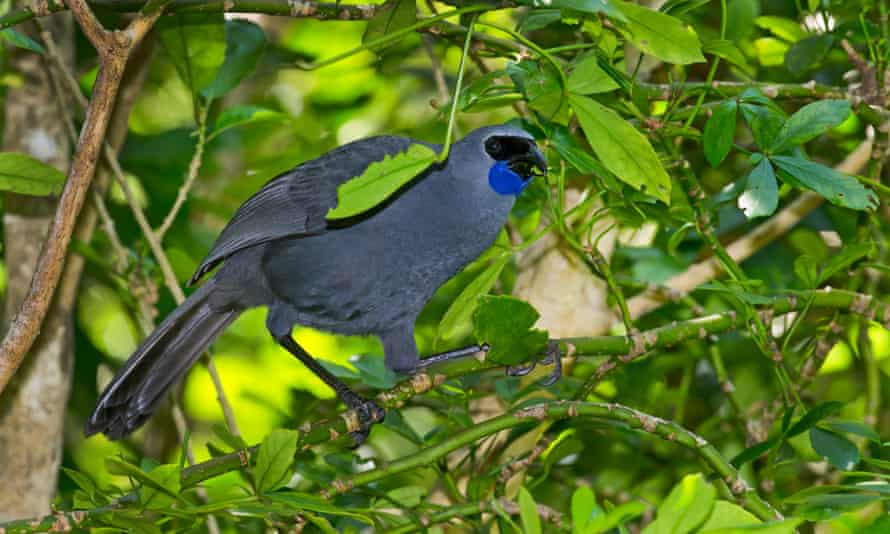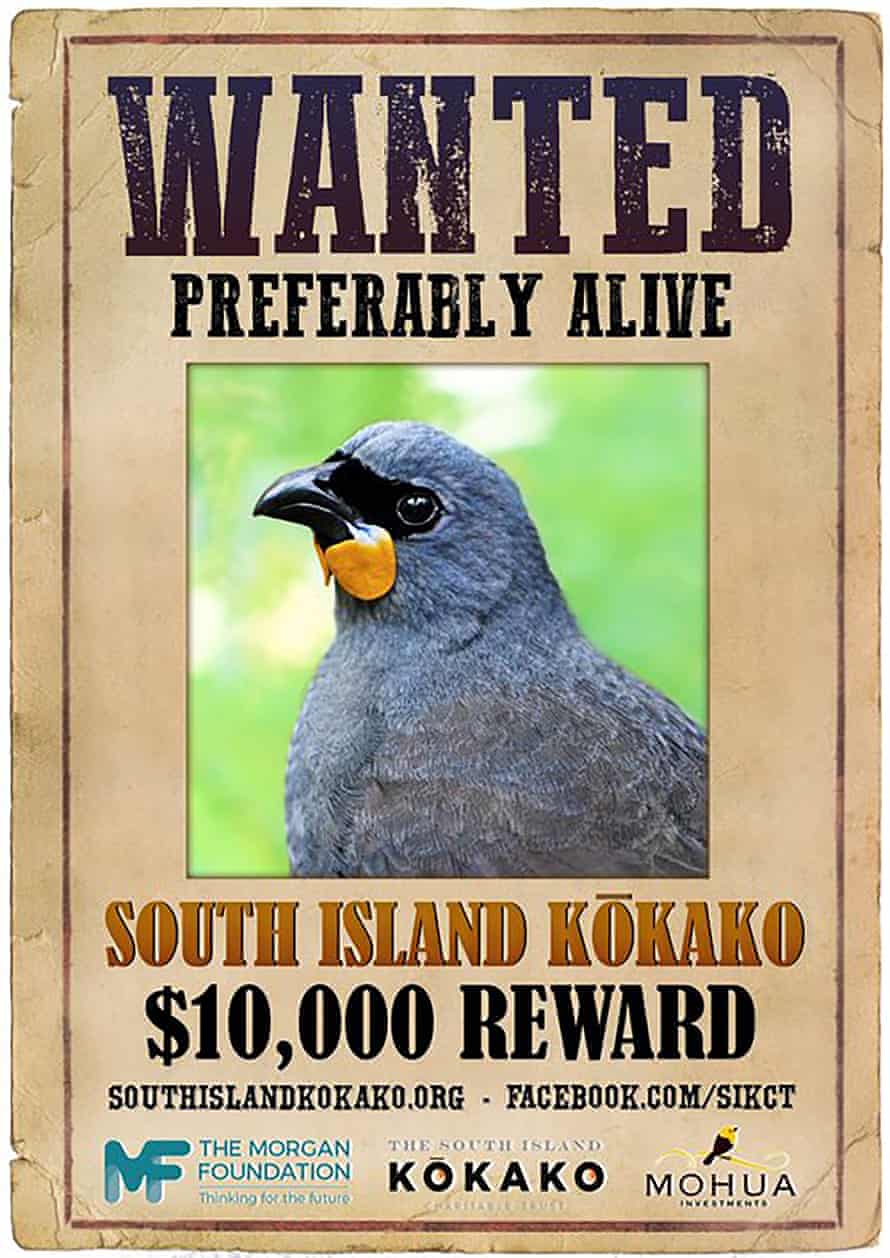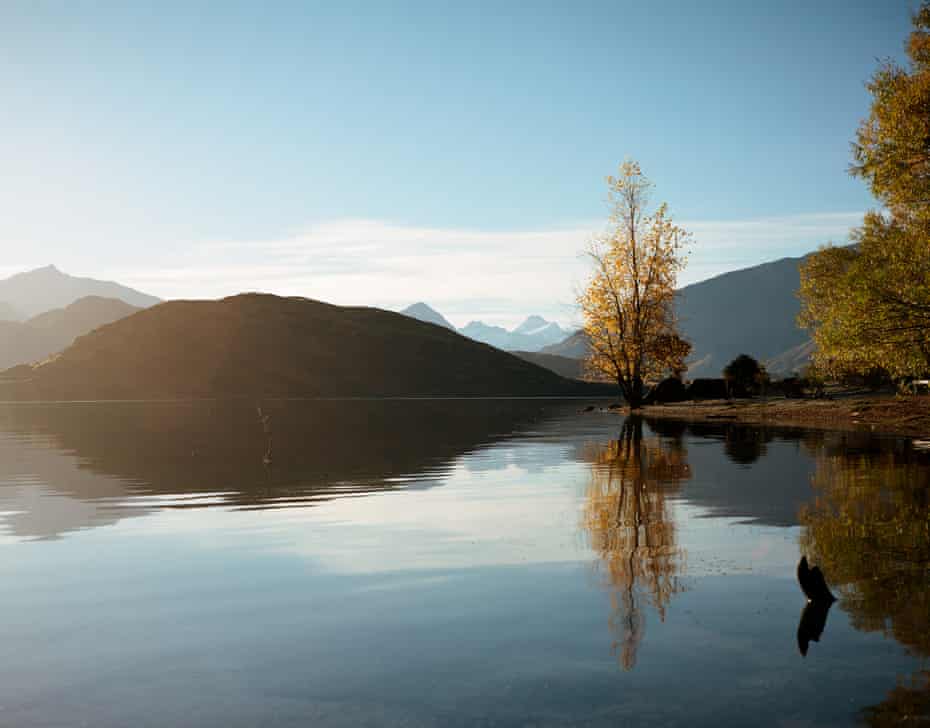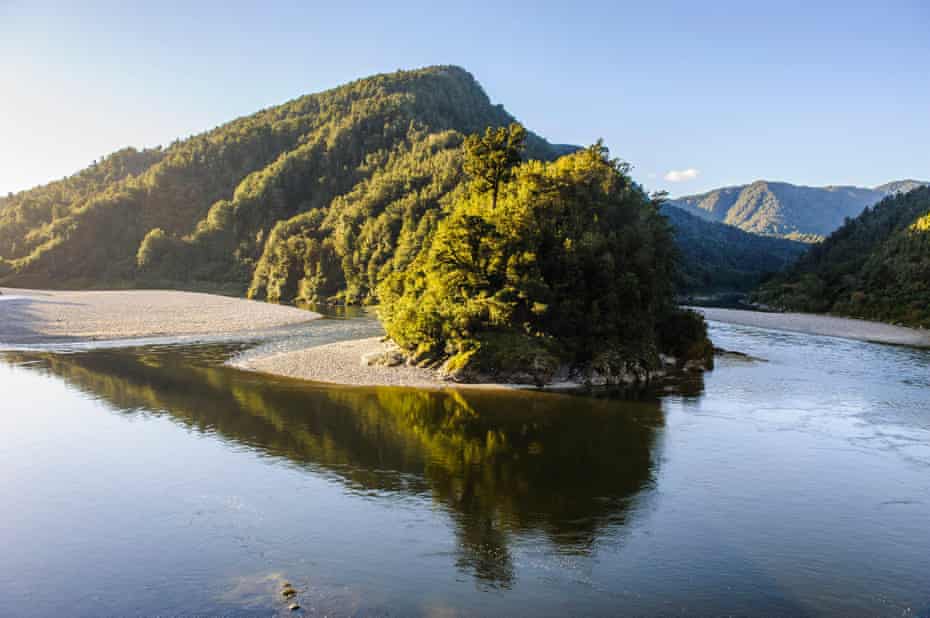There are few good news stories in conservation, but one group of committed volunteers in New Zealand is hoping for something better – a miracle.
Spurred on by the successful recovery of the North Island kokako – a large, long-legged songbird with a blue wattle and haunting call – they are searching the South Island for its close relative, though many already believe it to be lost.
Kokako were widespread in New Zealand’s ancient forests and known for their squirrel-like movement, hopping and leaping between trees. But their numbers plummeted after human settlement due to predation by introduced species.
Now the North Island kokako survives in low (if increasing) numbers while the South Island species – almost identical but for its orange wattle – is widely assumed extinct. But one band of devotees is refusing to give up hope.

‘Staggeringly beautiful’
In 1977, ecologist Rhys Buckingham heard a “staggeringly beautiful” bird call in Fiordland that he was certain was that of the South Island kokako – sparking a 40-plus year mission. With fellow conversationists Ron Nilsson and Nigel Babbage, in 2010 Buckingham co-founded the South Island Kokako Charitable Trust to expand the search.
Today, the trust organises increasingly hi-tech field missions through the native forests of the South Island and Stewart Island, hoping to prove the species exists so that it might be conserved. Though many report having seen or heard the bird over the decades, as yet there has been no definitive proof.
The most recent accepted sighting of a South Island kokako was in 2007, near Reefton, and prior to that, at Mt Aspiring in 1967. That led the Department of Conservation (DOC) to reclassify the species from extinct to “data deficient” in 2013, bringing new energy to the effort – but the government has so far declined to contribute funding.
Still without certainty, the trust has found sponsorship to offer a substantial reward: $10,000 (GBP5,122) for conclusive evidence that the bird exists.
Its wild west-style posters show the South Island kokako in profile, looking every bit a masked bandit beneath the woodcut font: “Wanted: Preferably alive”. These are displayed in DOC-managed visitor centres and huts, rural shops and pubs, tramping and hunting clubs, and conservation groups.

“Almost everybody has heard about our $10,000 reward,” says Inger Perkins, a former DOC ranger and the trust’s manager, at home in Hokitika on the West Coast. The aim is to involve “the whole country in the search for this bird,” says Perkins. “Eyes on the ground, basically.”
One last chance
In the past four years, nearly 260 possible “encounters” – be it alleged sightings or calls – have been reported to the trust. Each is logged on an interactive map and given an expert rating for credibility, with roughly a quarter considered probable – though verification is a “huge challenge,” says Perkins. “They may or may not be our bird … We haven’t got the evidence.”

The search has been enhanced by tech, with artificial intelligence used to identify individual species from photos and sound recordings of possible habitat.
From a speaker, solar panel, bike battery and smartphone (“a Heath Robinson get-up,” says Perkins), one trustee built a device that plays the call of the North Island bird at dawn and dusk, and records any response. It has been planted in the Grey Valley, south of Reefton – a hotspot for reports.
Most recently, the trust has worked with the same researchers who used environmental DNA testing to establish the biodiversity of Loch Ness (and, crucially, the absence of the monster). Samples have already been tested from two creeks near Reefton, with plans for more elsewhere.
No kokako have been found yet, but Perkins remains hopeful. “Some of the sightings and reports, you think – well, what else could it be?”
Many of those who have reported sightings or believe in the species’ survival are ornithologists and conservationists with extensive experience of New Zealand’s forests and fauna, she adds. “It’s really exciting to be part of such a positive team: they’re really optimistic, and striving to take the last chance to find it before it’s lost.”
But beyond this committed group, more believe it is already too late for the South Island kokako. “There are some people who believe they are still out there, or that they have seen one themselves – and there are others who are highly sceptical,” says Michael Szabo, editor of the Ornithology Society’s quarterly magazine Birds New Zealand.
He emphasises that there has been “no accepted, verified physical evidence” – whether that be clear footage, feathers or droppings, or a live bird or nest – of the species for over a century. “There have been a few distant, poor quality sound recordings but, to date, none of these have been accepted as evidence that the species still survives,” says Szabo.

Payout of the trust’s $10,000 reward is tied to confirmation from the Ornithology Society’s rare birds committee and DOC. “Then that’s the start of the real hard work,” says Perkins: to conserve the species. Even if an individual was found, she says, “it might be the last one.”
New Zealand is internationally renowned for its success in bringing species back from the brink of extinction – notably the takahe (rediscovered in 1948), Chatham Islands black robin and New Zealand storm petrel.
The South Island Kokako Trust has a recovery plan ready. But the seemingly slim chance of even finding a South Island kokako, plus the many other indigenous birds in need of help, does raise the question as to whether efforts might be better directed elsewhere.
‘We can’t walk away now’
Many of the South Island Kokako trustees are also involved with efforts to conserve other threatened species – such as the yellow-eyed penguin, orange-fronted parakeet or the kea, the world’s only alpine parrot – where there is potential to make a more immediate difference.
The point has been made within the trust, and it is “very logical,” says Perkins. “But our group doesn’t want to walk away … While there is still a chance and no one else is taking that chance – we’re it.”
Decades without sightings add to the urgency, she argues: “Every year that goes past when we don’t confirm that it’s there, and we don’t do the conservation, it’s another year closer to being extinct.”
Half of New Zealand’s birdlife has been lost for good since human settlement. “We don’t want to have another bird added to that list,” says Perkins.
In that way, the fight for the South Island kokako aligns with other conservation goals, such as raising awareness of losses to extinction, protecting and growing native forest, and DOC’s aim to be predator-free by 2050. “If we’re looking after our forests, those birds are going to thrive … It’s extending the conversation about conservation.”
In the meantime, spirits have been boosted by the recovery of the North Island kokako. In 1999, there were thought to be only around 1,000 birds left; today conservationists are celebrating 2,000 breeding pairs. “It gives us hope,” says Perkins.
A painstaking team effort by DOC, iwi and volunteer groups, taking in pest control and captive breeding programmes, has successfully reversed the North Island species’ decline. At some sites, numbers have increased by up to 50% each year.
“It’s an amazing achievement,” says Ilse Corkery, a technical adviser with the DOC recovery group.
The kokako’s status has now been downgraded, from “threatened” to “at risk”. “It was that early intervention – there was still just enough individuals left,” says Corkery. “It was probably caught in the nick of time.”
She is doubtful that the South Island species endures. “It would be amazing if it was – but I probably would not be holding out a huge amount of hope, to be honest.” That said, Corkery adds, if one bird was found – “there would be more effort put into finding more.”
It is that hopeful thought that keeps this small group searching, says Perkins, “and not letting go”. When the trust was first set up, its founders gave themselves five years to find definitive proof of the bird or move on.
But, Perkins says: “The more reports we get, the more we feel we can’t walk away now.”
Find more age of extinction coverage here, and follow biodiversity reporters Phoebe Weston and Patrick Greenfield on Twitter for all the latest news and features